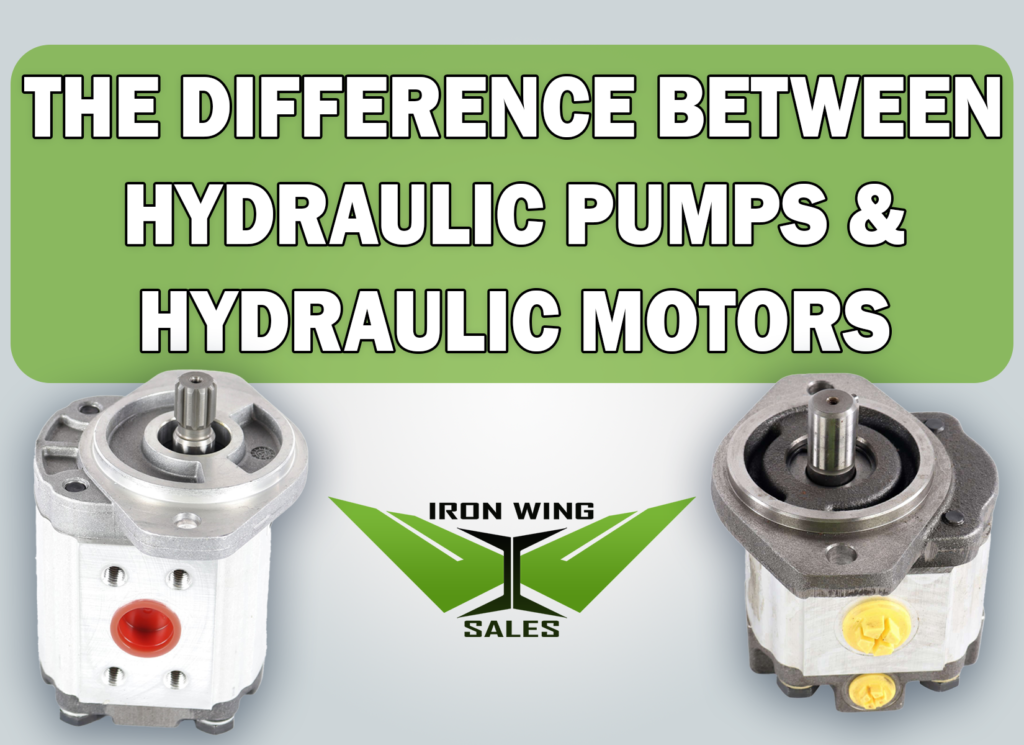
Hydraulic systems are used in manufacturing, heavy equipment, trucking & automotive, agriculture, mining, entertainment, and much more. Hydraulic systems operate by pressurizing incompressible fluid to achieve movement. These systems are capable of providing greater force and moving heavier loads than electrical, mechanical, or pneumatic systems. A hydraulic system is able to provide a constant force and torque, regardless of speed. This is not achievable with electrical, mechanical or pneumatic systems.
Hydraulic systems consist of a variety of components working in unison to achieve their actuation. Two parts of the hydraulic system are the hydraulic pump and the hydraulic motor. In this post, we will discuss the differences between these two components and how they work together as part of the hydraulic system.
Pumps VS Motors
Hydraulic pumps are used to generate fluid flow, while hydraulic motors are used to convert fluid flow into rotary motion. Hydraulic pumps typically have an inlet port for fluid to enter and an outlet port for fluid to exit. The pump’s rotor creates a vacuum that draws fluid in through the inlet port and then forces it out through the outlet port under pressure. In contrast, hydraulic motors have an inlet port for pressurized fluid to enter and an outlet port for fluid to exit. The motor’s rotor uses the pressure of the fluid to create rotary motion.
Hydraulic pumps transform mechanical energy into hydraulic energy. This serves to use the energy from the rotation of a motor to direct pressurized fluid to where it is needed throughout the system.
Hydraulic motors convert hydraulic energy into mechanical energy, using pressurized fluid to rotate the blades within the hydraulic motor and act upon the machinery connected to the hydraulic motor shaft.
That is the essential difference between hydraulic pumps and hydraulic motors. Beyond their function, pumps and motors can differ in a variety of ways. These differences include direction of rotation, tolerances, efficiencies, and more.
Another important difference between hydraulic pumps and hydraulic motors is their design. Both hydraulic pumps and motors come in a variety of configurations and types. Hydraulic pumps are typically designed with multiple pistons or vanes that rotate around a central axis. These pistons or vanes create chambers that alternately fill and empty as they rotate, which creates the fluid flow. Hydraulic motors, on the other hand, typically have a rotating gear or cam that interacts with a fixed gear or cam to create the rotary motion.
Although they operate using the same principles, hydraulic pumps and hydraulic motors cannot be used interchangeably. They are both part of a larger hydraulic system working to accomplish a goal.
Hydraulic Pumps & Motors at Iron Wing Sales
Looking for replacement hydraulic parts? Iron Wing Sales has a large inventory of Hydraulic parts, including pumps, cylinders, motors, seals, and more. All of our parts are In-Stock and Ready-to-Ship in order to help minimize downtime. Search our inventory by part #, category, or manufacturer to find the parts you need. For further assistance, contact us at: sales@ironwingsales.com or 216-912-9089.

